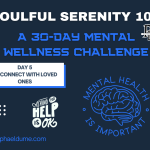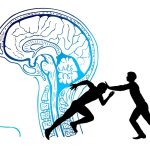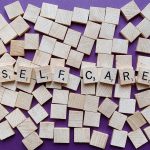
In a world often characterized by challenges, uncertainties, and adversities, it’s no wonder that our minds tend to gravitate towards negativity. This cognitive phenomenon, known as the negativity bias, influences our thoughts, emotions, and behaviors, often leading us to focus on the negative aspects of life and neglecting the positive ones. While this bias may have evolved as a survival mechanism, it can significantly impact our well-being and overall outlook on life. In this article, we will delve deep into the concept of negativity bias, explore its origins, and most importantly, discuss strategies to overcome it, allowing us to embrace positivity and lead more fulfilling lives.
Understanding Negativity Bias
Negativity bias refers to the human tendency to give greater importance to negative information and experiences compared to positive ones. This bias can manifest in various aspects of our lives, from the way we perceive events and people to how we make decisions.
The Evolutionary Roots of Negativity Bias
To understand negativity bias, it’s essential to recognize its evolutionary origins. Our distant ancestors faced numerous threats and dangers in their environment, such as predators, scarcity of resources, and hostile tribes. In such a perilous world, being hyper-aware of potential risks was a survival advantage. Those who paid more attention to negative signals, like the sound of a lurking predator or the taste of spoiled food, were more likely to survive and pass on their genes. Over time, this tendency became hardwired into our brains, ensuring that we remained vigilant and ready to respond to threats.
The Modern Manifestation of Negativity Bias
While our environment has evolved significantly since our ancestors’ time, our brains have retained this bias. In the modern world, negativity bias manifests in several ways:
- News Media: The media often prioritizes negative news stories, such as accidents, conflicts, and disasters, which can create a skewed perception of the world’s overall state.
- Social Interactions: Negative experiences and interactions tend to have a more profound impact on our emotional well-being than positive ones. We may dwell on criticism or negative comments while brushing off compliments or praise.
- Decision-Making: Negativity bias can affect our decision-making processes. We may be more risk-averse, avoiding potential losses, even if the potential gains outweigh them.
- Memory: Negative experiences are more likely to be stored in our long-term memory, making them more accessible and influential over time.
- Emotions: Negative emotions, such as fear and anger, can overpower positive ones, leading to increased stress and anxiety.
Understanding these manifestations of negativity bias is the first step towards overcoming it and embracing positivity.
The Toll of Negativity Bias on Well-Being
Negativity bias can take a toll on our well-being in several ways:
- Increased Stress: Constantly focusing on negative information and experiences can lead to chronic stress, which has detrimental effects on both physical and mental health.
- Reduced Resilience: Negativity bias can diminish our ability to bounce back from setbacks and challenges, as we tend to dwell on negative outcomes rather than seeking solutions.
- Strained Relationships: This bias can also impact our relationships. We may hold grudges, remember negative interactions more vividly, and struggle to forgive and move on.
- Diminished Happiness: By fixating on the negative aspects of life, we may fail to appreciate the positive moments and experiences that can bring joy and fulfillment.
Now that we understand the impact of negativity bias on our lives, let’s explore strategies to overcome it and embrace positivity.
Strategies for Overcoming Negativity Bias
- Cultivate Gratitude: One of the most effective ways to counter negativity bias is to practice gratitude. Regularly reflecting on the things you are thankful for can shift your focus away from negativity and towards the positive aspects of your life. You can keep a gratitude journal, where you jot down daily or weekly entries of things you appreciate.
- Mindfulness Meditation: Mindfulness meditation involves paying attention to the present moment without judgment. This practice can help you become more aware of your thought patterns and learn to observe them without getting caught up in negative thinking. Over time, mindfulness can reduce the impact of negativity bias on your mental state.
- Positive Affirmations: Affirmations are positive statements that you repeat to yourself. They can help reprogram your subconscious mind to focus on the positive. For example, if you often doubt your abilities, you can repeat affirmations like “I am capable and confident.”
- Limit Exposure to Negative Information: While staying informed is essential, you can limit your exposure to excessively negative news or social media content. Choose trusted sources of information and set boundaries on the amount of time you spend consuming news or scrolling through social media.
- Challenge Negative Thoughts: When you notice negative thoughts creeping in, take a moment to challenge them. Ask yourself if the thought is based on facts or assumptions. Often, negative thoughts are unfounded and can be replaced with more balanced and realistic perspectives.
- Practice Self-Compassion: Treat yourself with the same kindness and understanding that you would offer to a friend. Self-compassion involves acknowledging your imperfections and mistakes without harsh self-criticism. This practice can help counter the self-doubt and negative self-talk associated with negativity bias.
- Surround Yourself with Positivity: Build a supportive and positive social circle. Spending time with people who uplift and encourage you can counterbalance the effects of negativity bias. Positive relationships can provide emotional support and a sense of belonging.
- Foster a Growth Mindset: Embrace the idea that challenges and failures are opportunities for growth. A growth mindset can help you view setbacks as temporary and motivators for improvement, rather than as permanent failures.
- Engage in Activities That Bring Joy: Identify activities and hobbies that genuinely bring you joy and fulfillment. Engaging in these activities regularly can boost your overall positivity and resilience.
- Seek Professional Help: If negativity bias significantly affects your mental health and well-being, consider seeking the guidance of a mental health professional. Therapists and counselors can provide techniques and strategies tailored to your specific needs.
Conclusion
Negativity bias is a natural cognitive phenomenon that has evolved to keep us safe in a dangerous world. However, in the modern world, where physical threats are less common, this bias can lead to increased stress, reduced happiness, and strained relationships. Fortunately, by understanding the roots of negativity bias and implementing strategies to counteract it, we can embrace positivity and lead more fulfilling lives.
Overcoming negativity bias is an ongoing process that requires dedication and practice. By cultivating gratitude, practicing mindfulness, challenging negative thoughts, and fostering positive relationships, we can gradually shift our focus away from negativity and towards a brighter, more optimistic outlook on life.
Remember that small changes in your mindset and habits can lead to significant improvements in your overall well-being. Embrace positivity and watch your life transform for the better.







